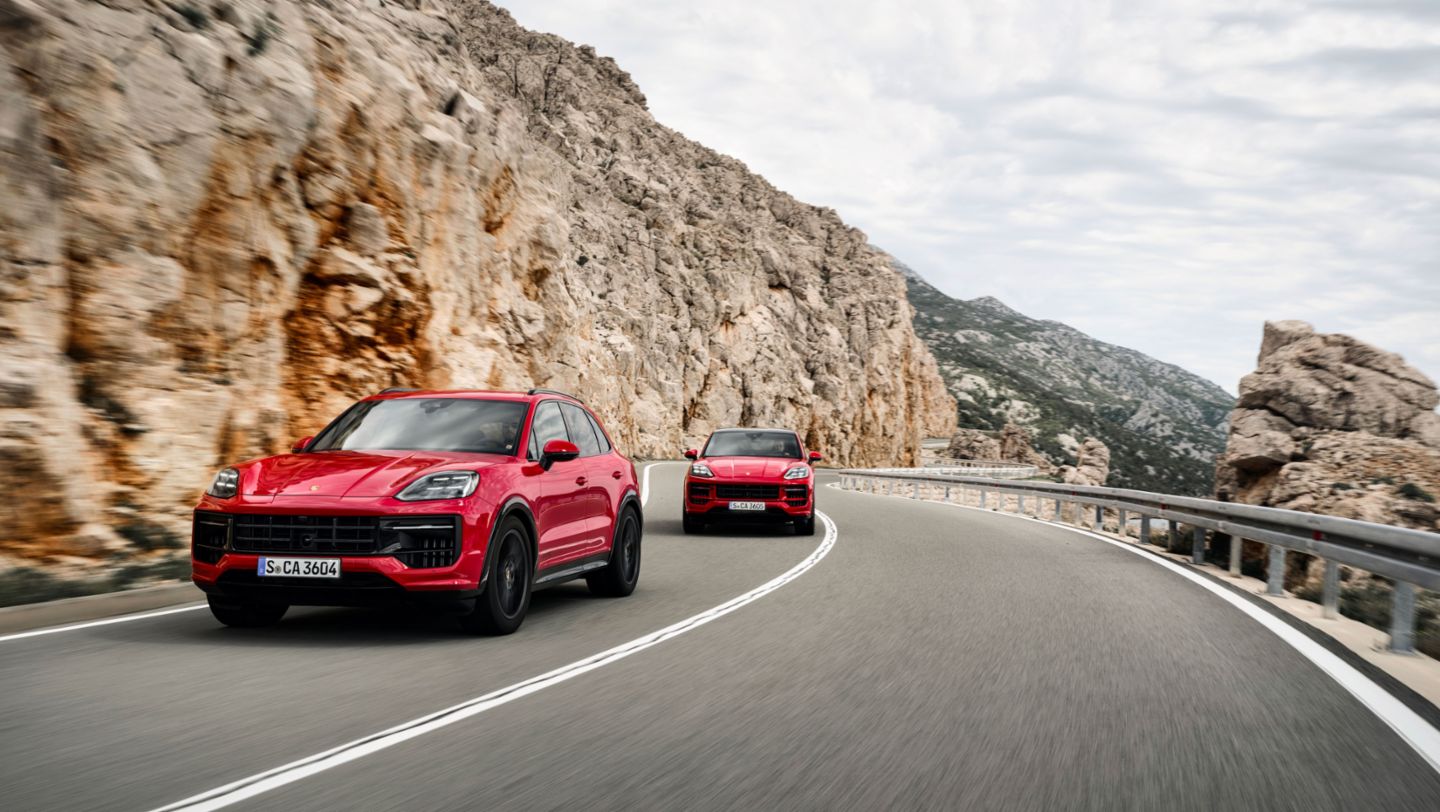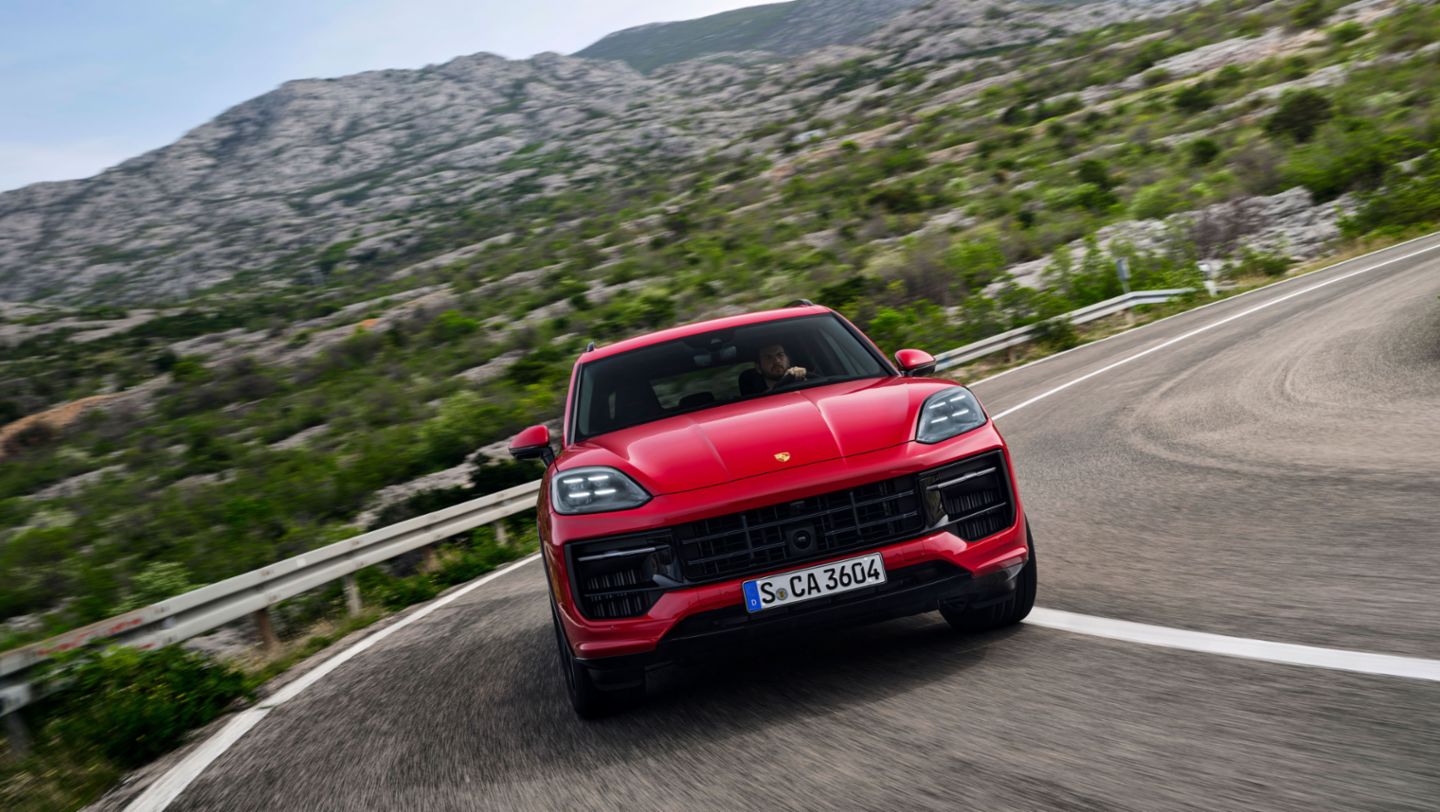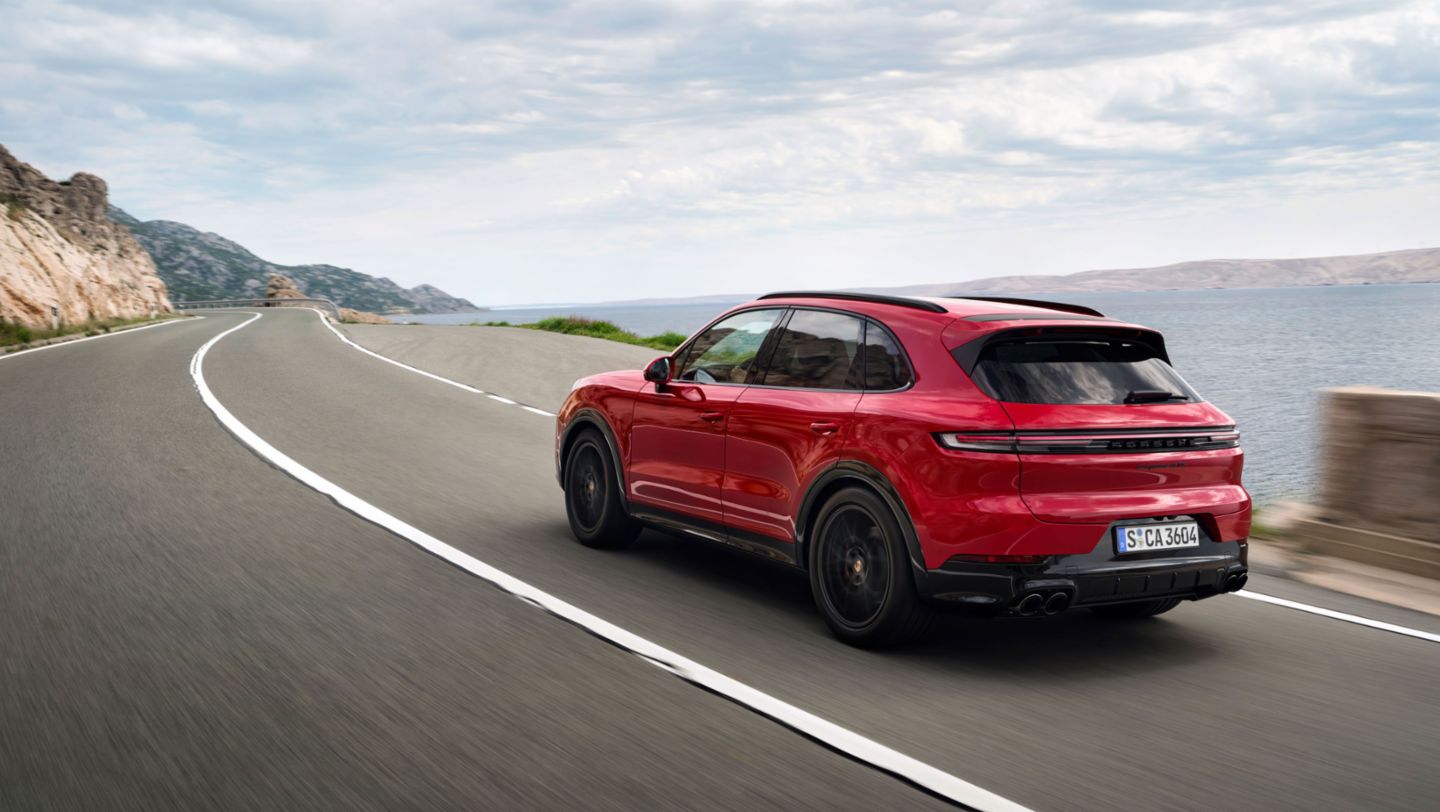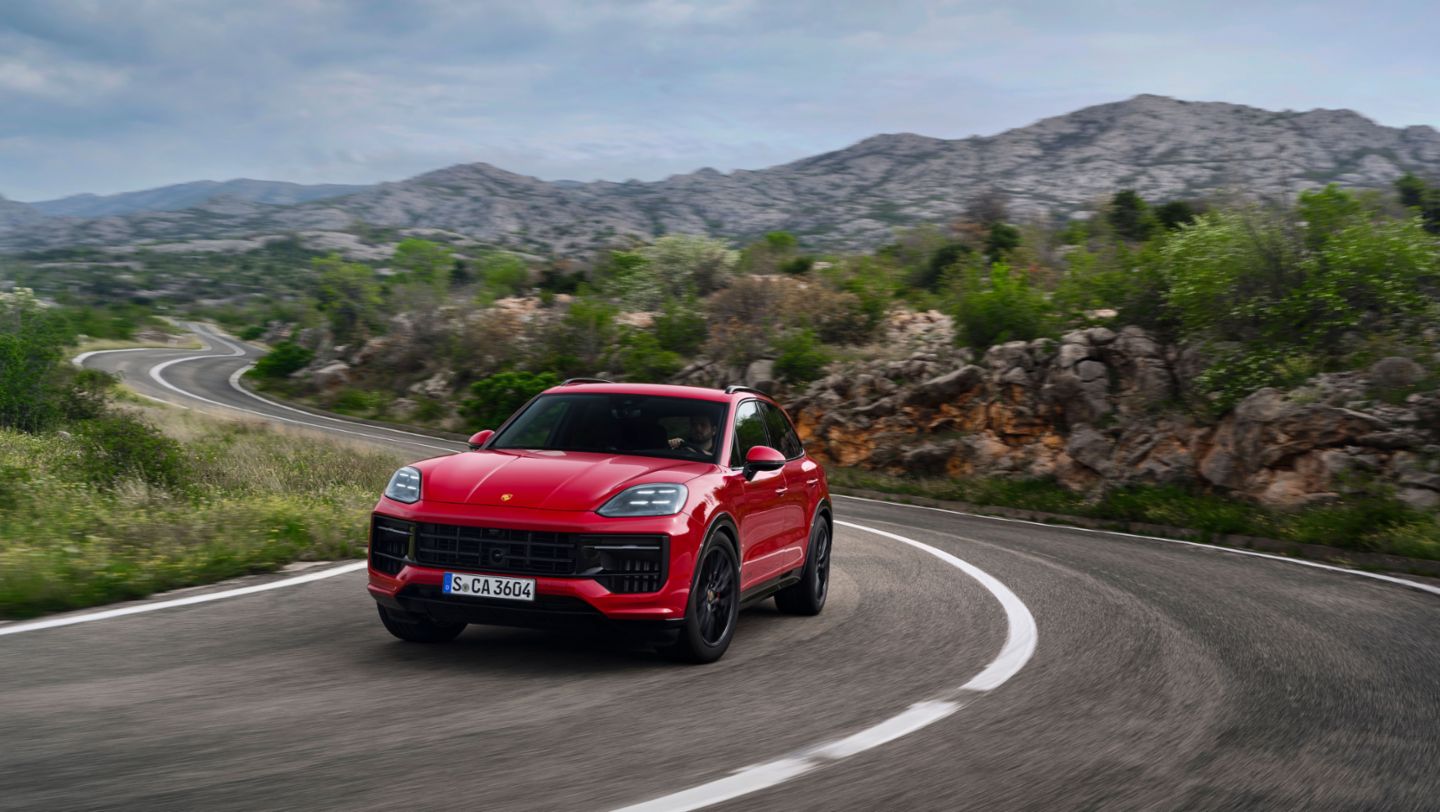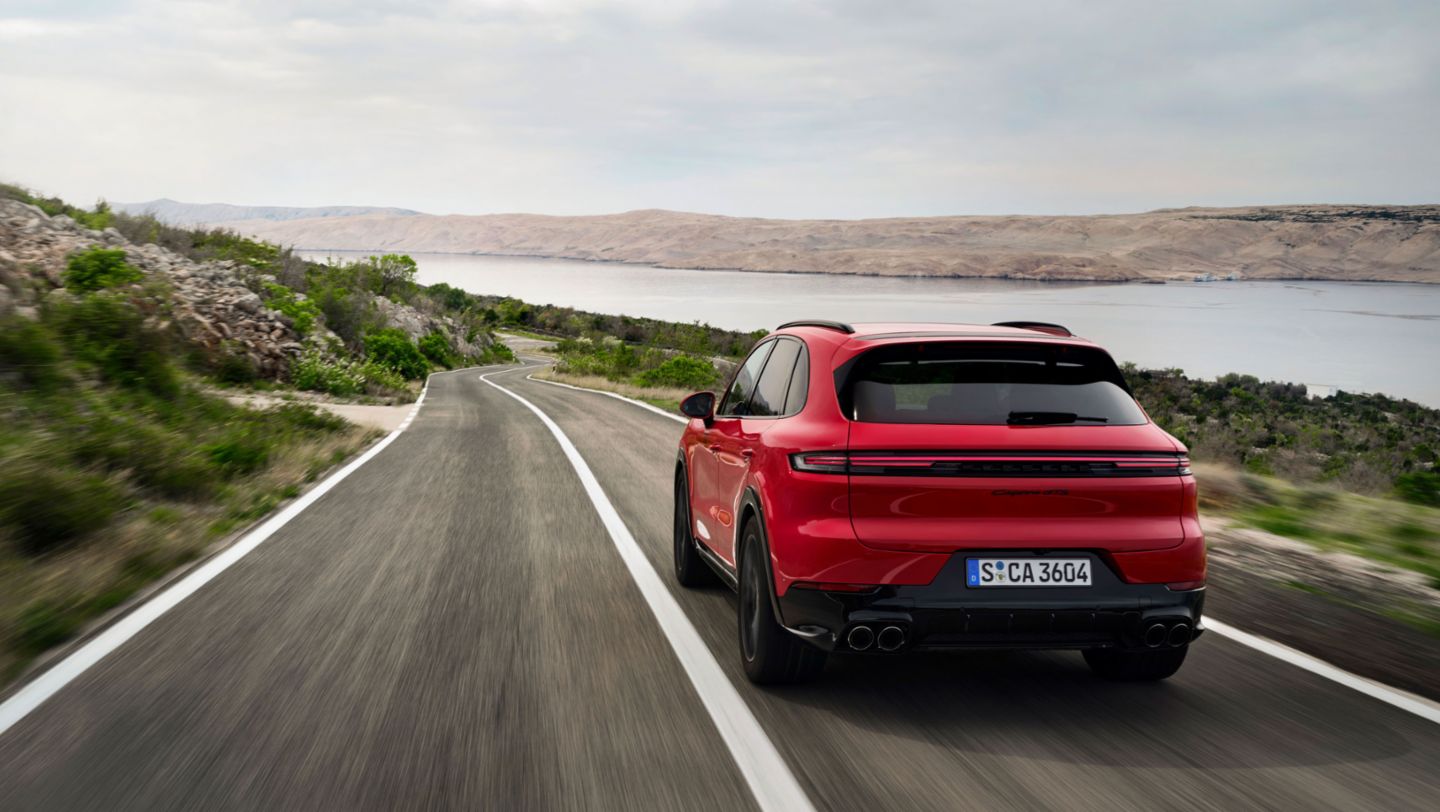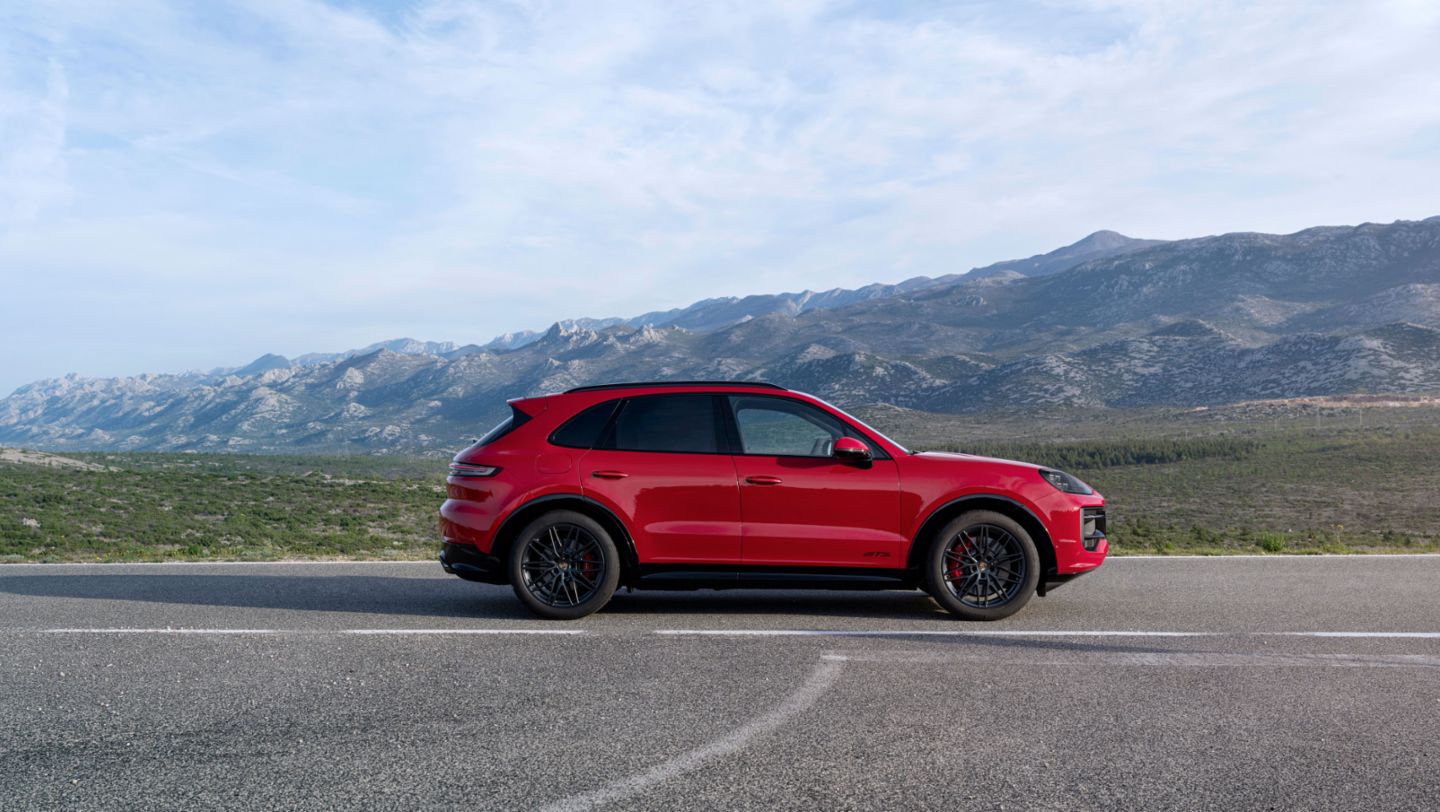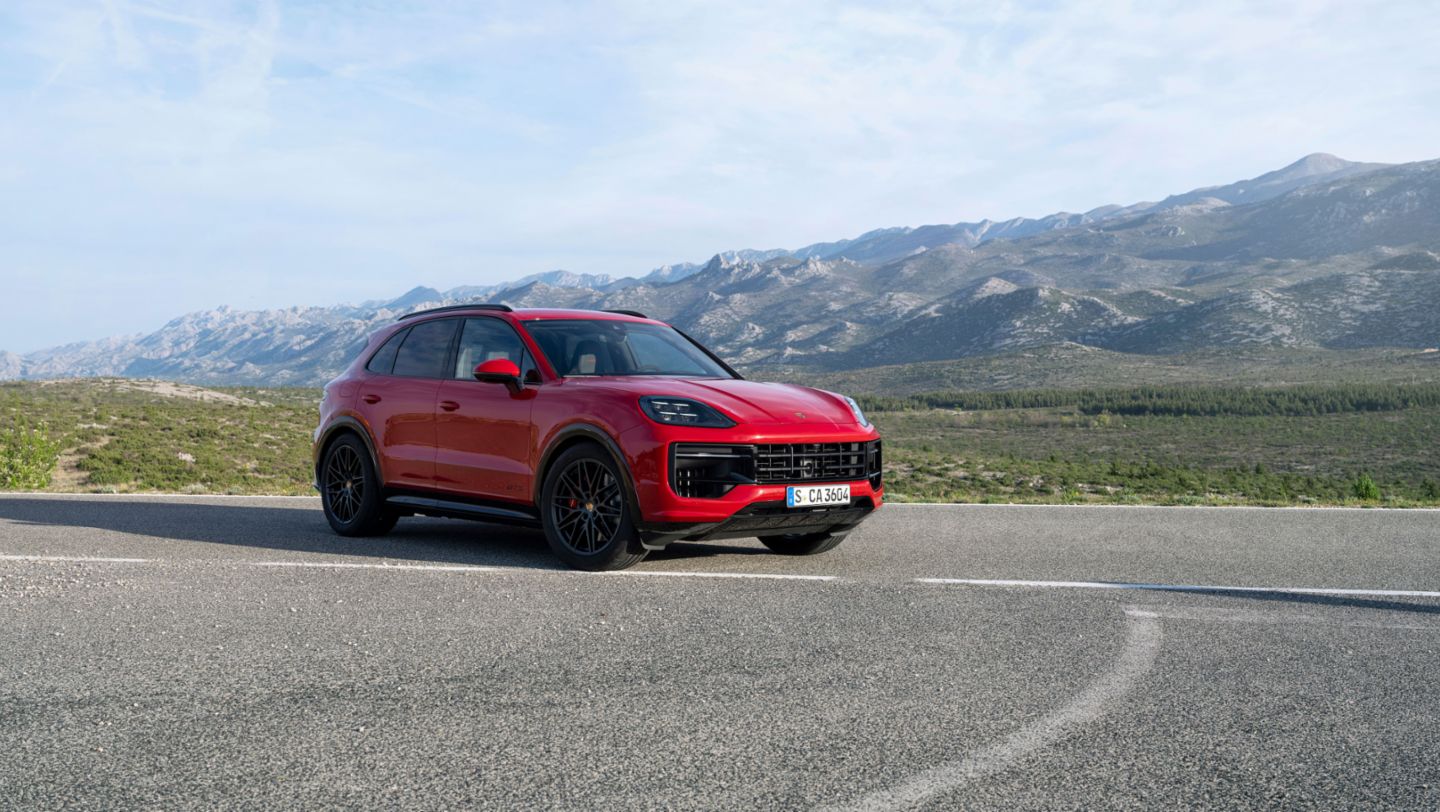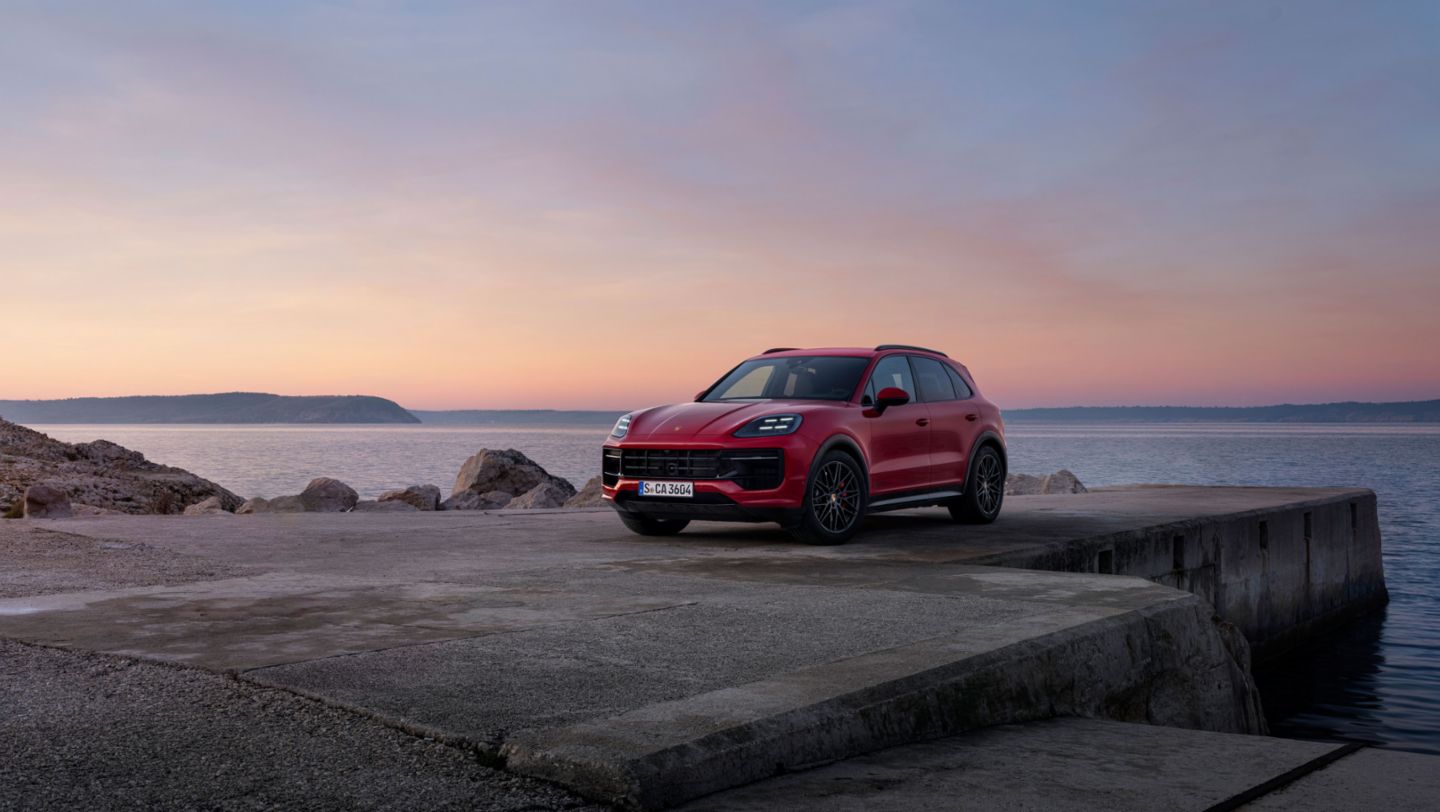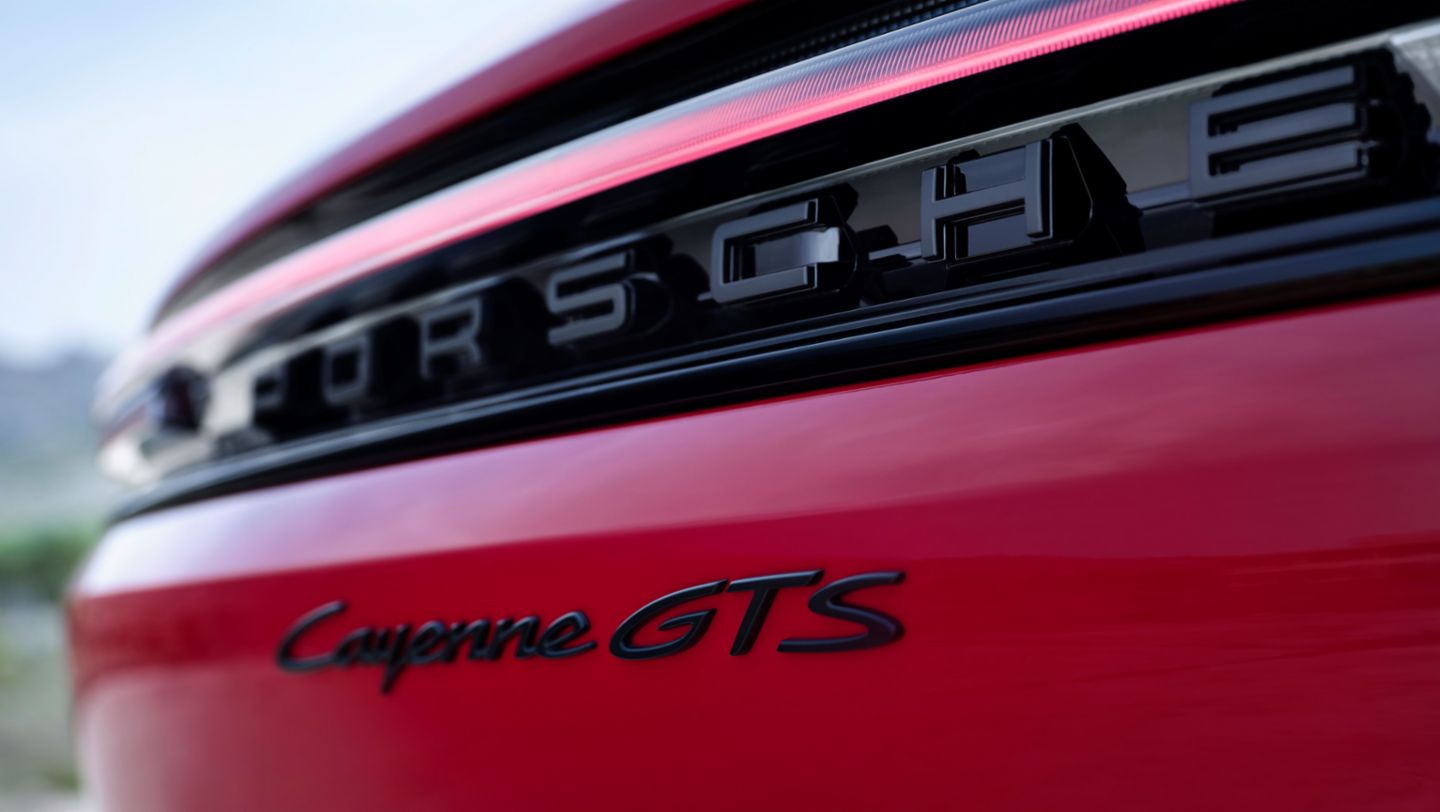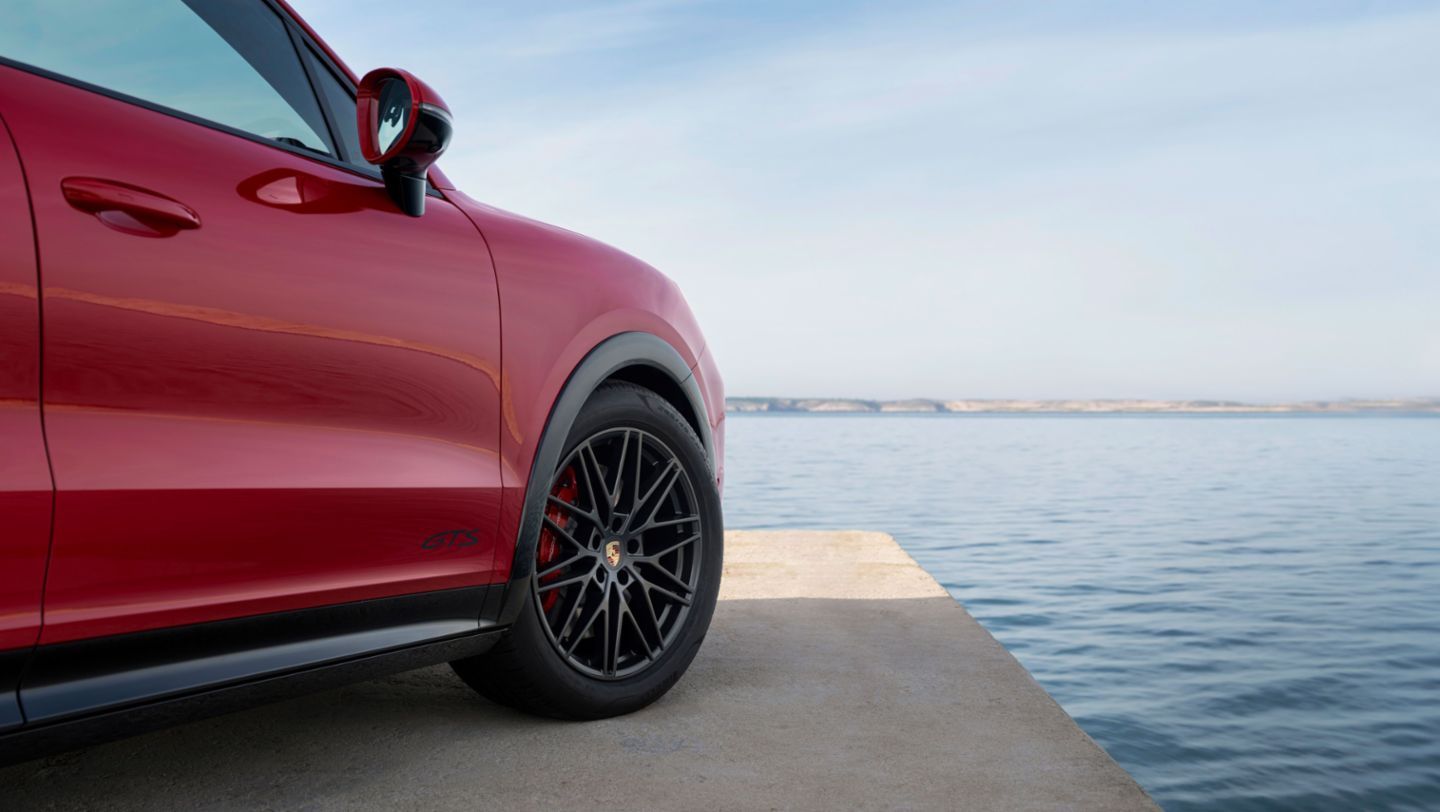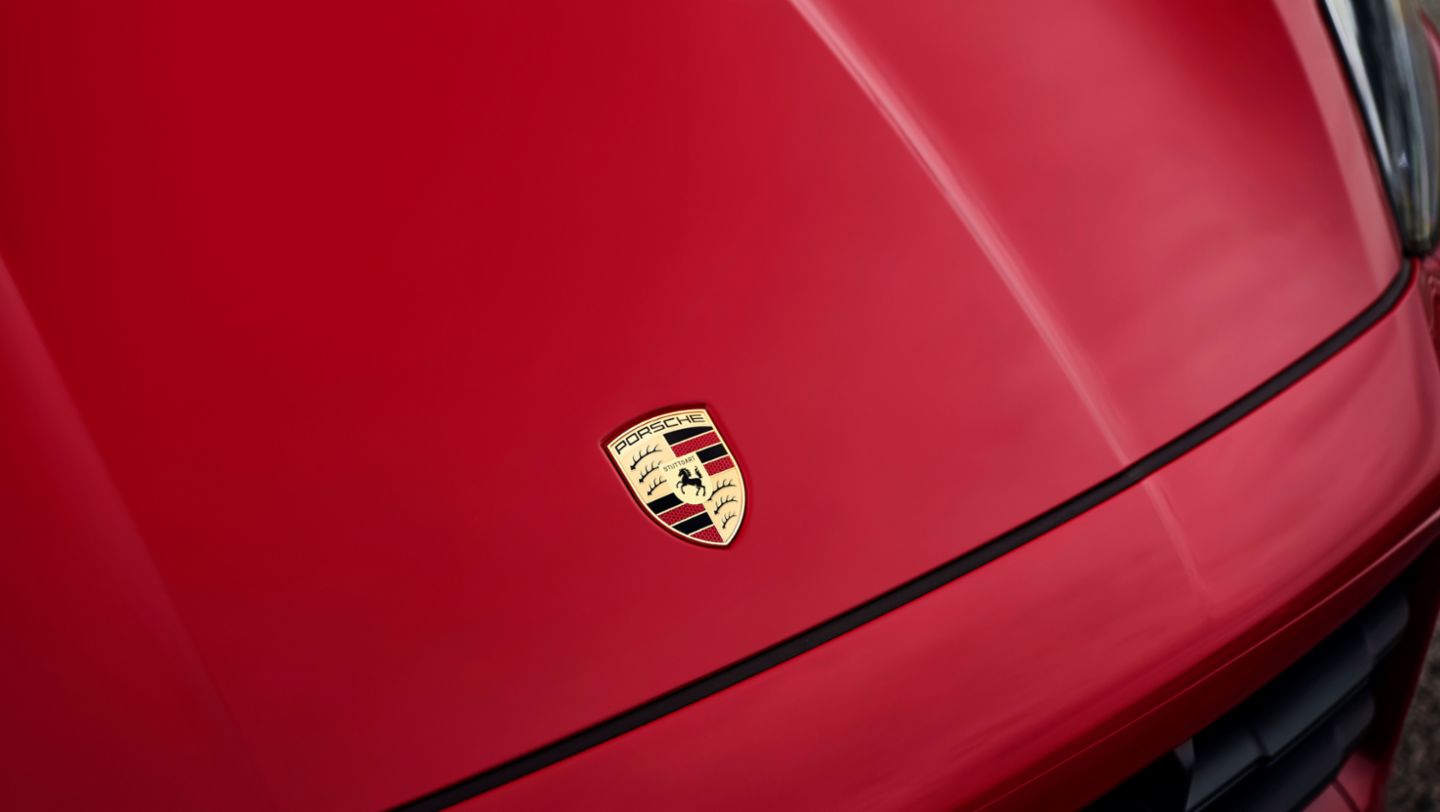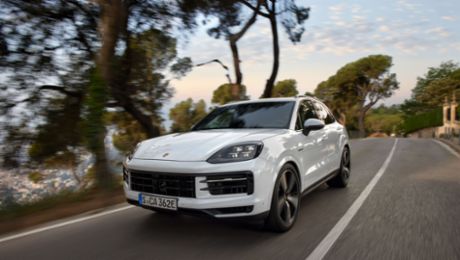The SUV and Coupé combine a powerful 368 kW (500 PS, Cayenne GTS: Fuel consumption* combined (WLTP) 12.7 – 12.2 l/100 km, CO₂ emissions* combined (WLTP) 289 – 277 g/km, CO₂ class G , Cayenne GTS Coupé: Fuel consumption* combined (WLTP) 12.7 – 12.2 l/100 km, CO₂ emissions* combined (WLTP) 290 – 277 g/km, CO₂ class G ) twin-turbo V8 engine and equally performance-driven chassis systems with everyday practicality, distinctive design elements and enhanced standard equipment.
At Porsche, the GTS abbreviation stands for Gran Turismo Sport – in practice, it means an extra dose of dynamism and long-distance capability. At its core, the Cayenne is both a high-performance sports car and an all-terrain SUV. However, for the GTS models, this balance has traditionally shifted towards improved on-road capability. With a powerful drive system, precise tuning and an exclusive design, the new Cayenne GTS remains true to this principle while remaining suited to everyday use.
Chassis technology from the Cayenne Turbo GT
The precisely honed, GTS-specific chassis and 10-millimetre-lower ride height mark an exciting development for the Cayenne GTS. Looking a little deeper, the car is now equipped with adaptive air suspension as standard, including Porsche Active Suspension Management (PASM) and Porsche Torque Vectoring Plus (PTV Plus). All chassis components and control systems, such as Porsche Traction Management (PTM) and the optional Porsche Dynamic Chassis Control (PDCC), are specifically designed for optimal on-road performance.
The GTS’s two-valve damper technology offers impressive responsiveness, and its two-chamber air suspension gives the car a highly dynamic spring rate while simultaneously ensuring driver comfort. The front axle pivot bearings of the Cayenne GTS models originate from the Cayenne Turbo GT (not offered in Europe). They increase the negative camber of the wheels by 0.58 degrees in comparison to other Cayenne models. The result is strikingly agile cornering and exceptional handling dynamics.
Cayenne GTS with V8 biturbo engine
In addition to the finely tuned chassis, the charismatic V8 is another important feature of the Cayenne GTS. The 4.0-litre twin-turbo V8, developed by Porsche and manufactured in Zuffenhausen, has undergone extensive technical revision. This has resulted in efficiency gains and a significant increase in performance: the engine now produces 368 kW (500 PS) of power – an increase of 30 kW (40 PS) compared to the previous model. The maximum torque is now 660 Nm, an increase of 40 Nm. The revised eight-speed Tiptronic S transmission noticeably improves driving performance through shorter response and shift times in Sport and Sport Plus modes.
In combination, these features give the four-door sports car truly remarkable performance. The new Cayenne GTS accelerates from 0 to 100 km/h in 4.4 seconds. The top speed is 275 km/h. A further technical innovation is that the transfer box for the all-wheel drive Porsche Traction Management (PTM) features an independent water cooling circuit. This technology is also adopted from the high-performance Turbo GT model. It stabilises the continuous load capacity – for example when tackling track driving or navigating mountain routes.
Exclusive GTS-style design and equipment
All of Porsche’s GTS models are recognisable thanks to their unique, sporty design. On the Cayenne GTS this includes black ‘GTS’ lettering on the sides and rear of the car, a special front end with bigger cooling air intakes, dark-tinted headlights and tail lights, and red brake callipers. Keeping with this classic design DNA gives the car that instantly recognisable Porsche look, but with a few innovations. Body attachments such as the side skirts, front inlays, side window trims and wheel arch extensions, which all form part of the standard Sport Design package, are now manufactured in High-Gloss Black. On previous GTS models, some of these body parts were body coloured. In contrast, the sports exhaust system tailpipes, which previously came in Black, are now finished in a dark bronze tone. To further enhance the design portfolio of the Porsche GTS models, 21-inch RS Spyder-design wheels are fitted and finished in anthracite grey.
The interior of the Cayenne GTS features a heated GT sports steering wheel as standard. The high-quality material Race-Tex can also be found throughout the car. The suede-like fabric covers the roof lining, armrests and door panels, as well as the centre panels of the eight-way-adjustable sports seats. The side bolsters have been further raised to offer even more lateral support when cornering. Two alternative, GTS-specific interior packages in Carmine Red or Slate Grey Neo (not at the start of sales) are also available from Porsche for a more customised look.
New Driver Experience with ambient lighting and surround sound
The new GTS models benefit from the recent comprehensive product upgrade for the Cayenne, which includes the new Porsche Driver Experience with a curved digital instrument cluster as standard and an optional passenger display. In addition to the Sport Design package, dark-tinted HD matrix LED headlights and air suspension, the model also features a Bose® surround sound system and ambient lighting.
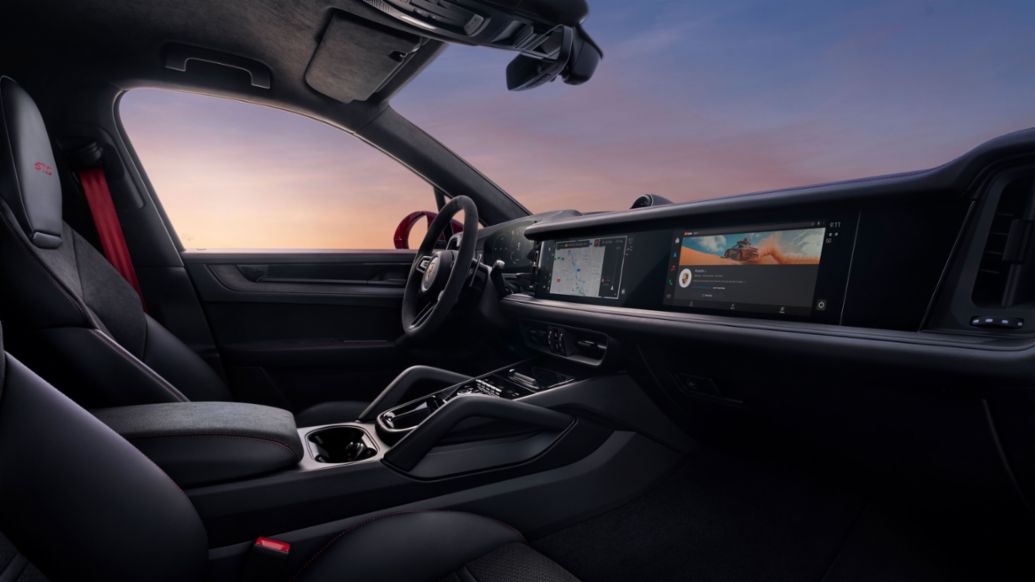
The Cayenne GTS Coupé also includes a fixed panoramic roof in glass, as standard, as well as an adaptive extending rear spoiler. If desired, the dynamic feel of the Coupé can be heightened even further with a Sports exhaust system with centrally positioned tailpipes in dark bronze. This is available as part of the three different lightweight sports packages. These also include a lightweight roof and a carbon rear diffuser, as well as reduced insulation. Depending on the equipment, the Lightweight packages can reduce the weight of the vehicle by up to 25 kilograms.
Both models are now available to order. Deliveries in Europe will begin in Summer 2024.

